Wondering how to preserve wild grapes or fruit from your backyard? Take a page from the Ancient Greeks and make Petimezi: a thick grape molasses recipe similar to homemade saba or balsamic vinegar reduction. It's fantastic added so sauces, drinks and desserts, especially mixed with tahini.
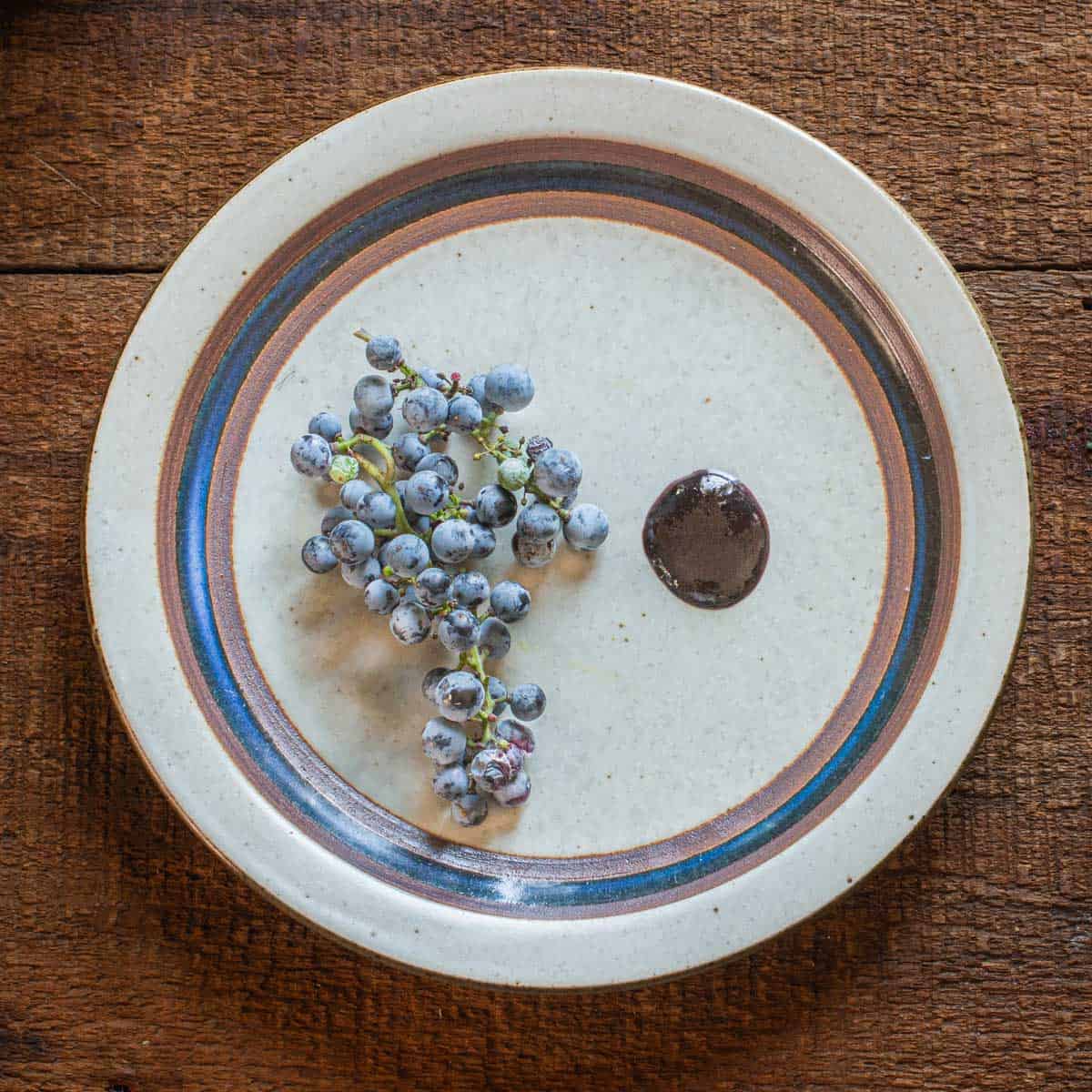
Reductions of fruit juice like this are common in the Middle East and the Caucuses. Goergia, Turkey, Azerbaijan and many other places have similar techniques for different fruit. Also known by the name of pekmez, it can refer to a reduction of fig or mulberry juice too. The Greeks are mostly known for making it from fresh pressed grape juice.
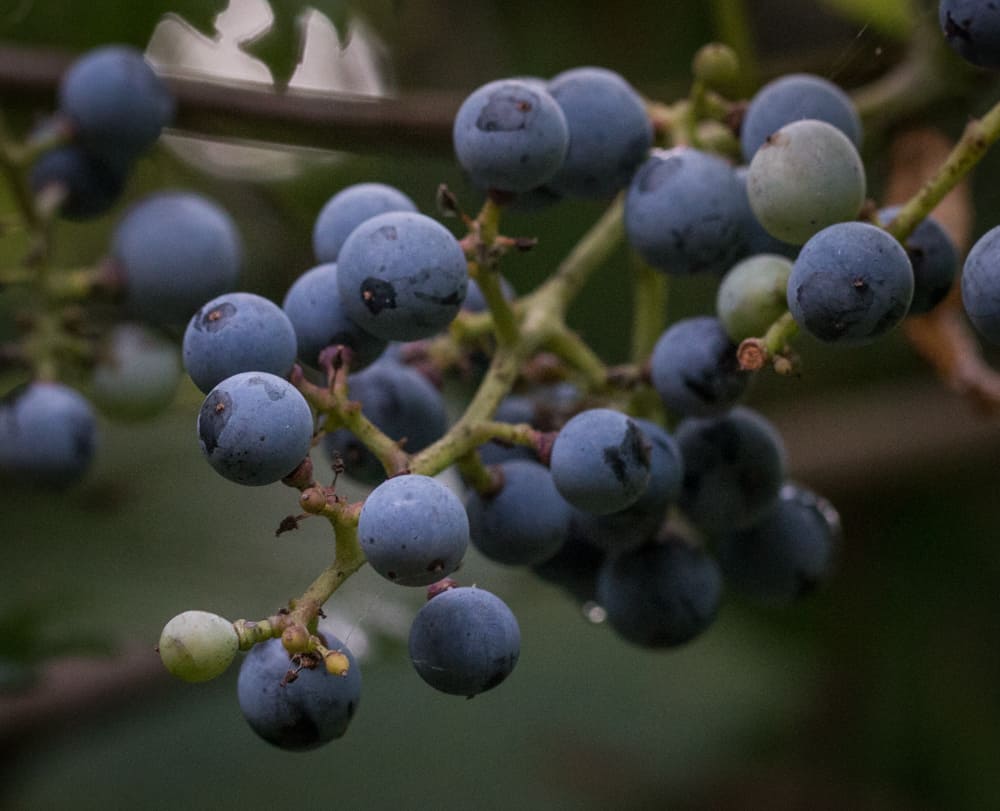
Chef's Tip
Ideally you should use cold-pressed grape juice. You can cook the grapes and it makes juicing them easier, but all of the seeds being cooked will activate pectin and make it more like jam. Some people like the jammy texture (see below), but it will need to be warmed to be liquid again.
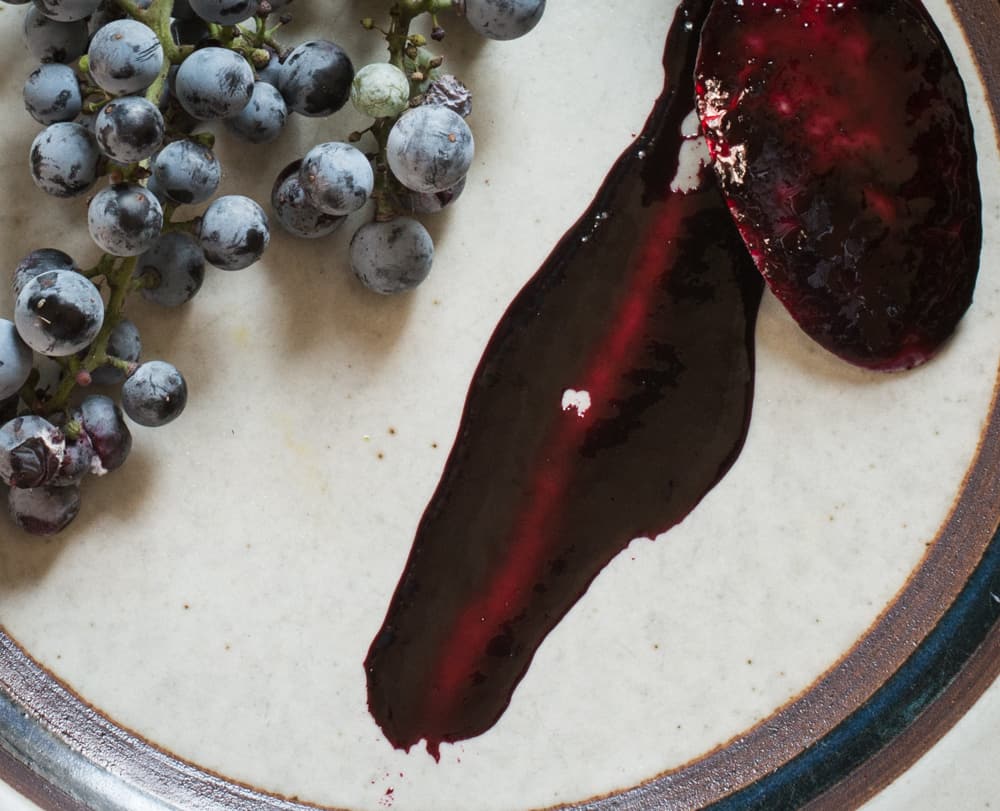
How to Use Grape Molasses
- Sucuk or a braid of walnuts dipped in grape molasses is a special, traditional sweet.
- Mixing the syrup with tahini is one of the most traditional uses.
- As it contains no sugar, it can also be used like saba or balsamic vinegar reduction. I occasionally use it in meat braises like my Bison Braised in Wild Grape Juice.
- Use it anywhere you'd use pomegranite molasses or balsamic vinegar.
- Another traditional use is to reconstitute the syrup with water to make a drink as is done with apple molasses.
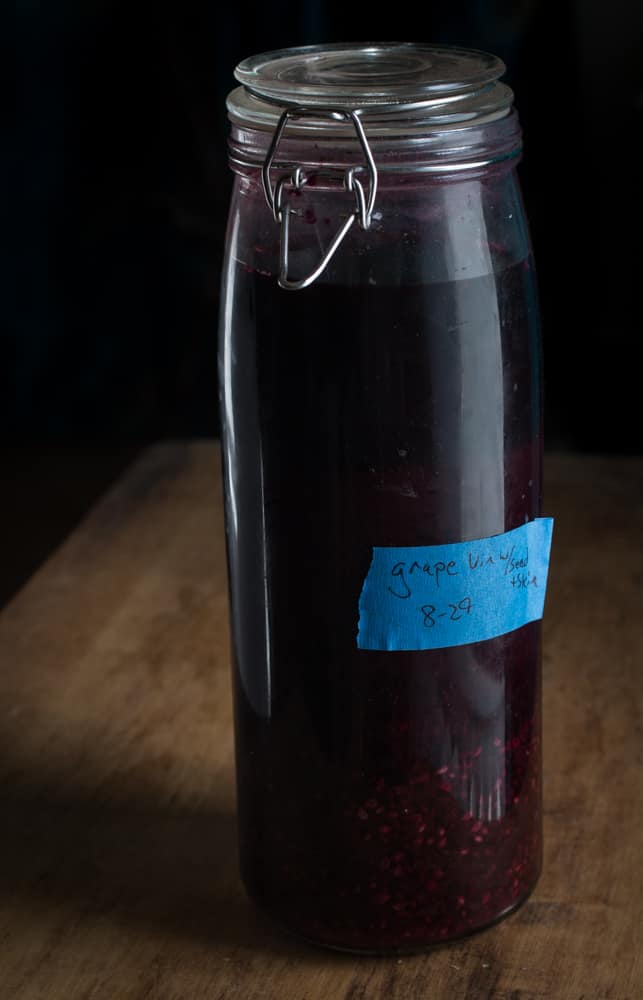
More Fruit Juice Reductions and Syrups
Greek Petimezi or Grape Molasses (Grape Must Syrup)
Equipment
- Cheesecloth
- Foodmill, preferably with set up with a medium die
- Fine Strainer
- Non-reactive sauce pot, such as stainless steel
- Whisk
Ingredients
- 6 lbs Fresh grapes
Instructions
Harvest
- Cut the clusters of grapes off the vine using a good scissors. You can leave the fruit on the racemes (stems) but it's slightly harder to juice.
Extract the Juice Cold
- Mash the grapes with a potato masher. Stir the mixture from bottom to top, then mash again.
Strain
- Strain the juice through cheesecloth, squeezing out the juice. The pulp that's left over can be used to make homemade vinegar. If you use wild grapes allow the juice to rest overnight so the tartaric acid settles to the bottom.
- Without disturbing the liquid too much, pour off the juice from the top and reserve, discarding the sediment at the bottom of the jar.
- Measure the juice to see how much there is so you have a benchmark for reducing by 70% in volume. You should have at least 5 cups.
Reduce
- Return the juice to the cleaned pot, simmer on medium-high until reduced by 70% and the mixture coats the back of a spoon.
- Transfer the reduction to a mason jar, label, date and refrigerate. The reduction will last for a few months under refrigeration, wipe the jar's lid with vinegar occasionally to ward off mold.
- You can also process the jars in a water bath, 10 minutes for pints as for regular pickles. Use the sauce anywhere you would use pomegranate molasses.
Notes
Nutrition
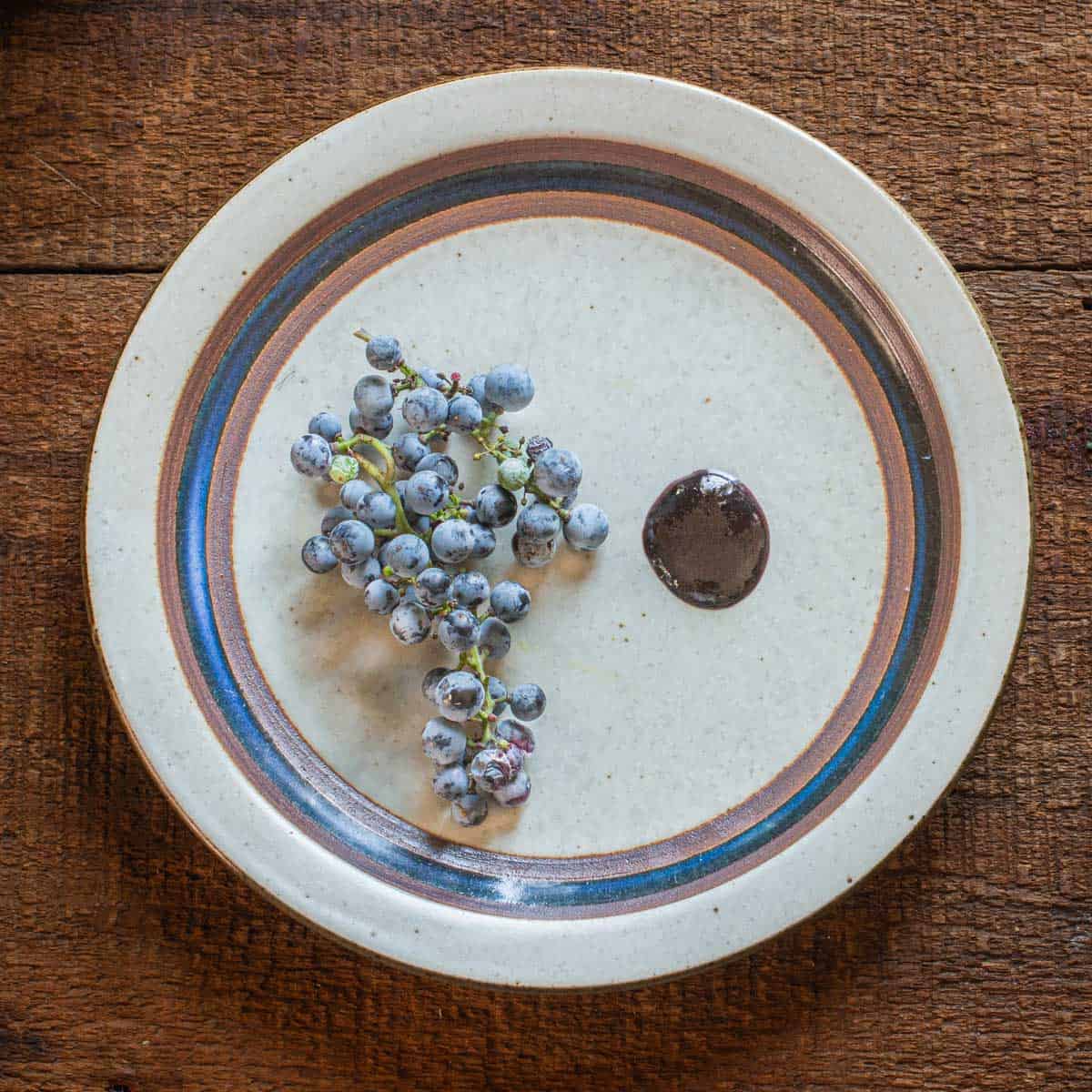

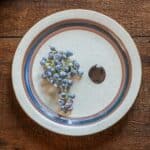
Brian
OK, I put it in the fridge and now its like jelly. Delicious. Thanks Alan.
Alan Bergo
Thanks Brian.
Brian
Not sure what I'm doing wrong. I got 3.5 cups of wild grape juice and reduced it down to less than a cup. It's still not syrupy. It's a tasty concentrate. I did let the solids settle overnight. Any ideas on how to thicken it? It is delicious and I can use it for sauces.
JessB
“Mash the grapes as if they owe you money” lololol
I’ve been using this wild grape reduction to flavor kombucha all winter (beautiful color!), and just rediscovered a jar of vinegar. It looks like some sediment settled to the bottom over the months untouched, so I’m assuming it makes sense to decant a second time. Thanks for the fun project, Chef!
Alan Bergo
Glad it worked for you. I love wild grapes. Yes you can rack/decant it, it's probably tartaric acid from the grapes.
Ellen
So now I want to know if I can make mahleb with the pits of my chokecherries AFTER I strain them out of the rye whiskey they're macerating in. I'm making chokecherry bounce, and i have another two months to go. I'd never heard of mahleb and I'm used to torturing myself.
Alan Bergo
I would assume so, but it sounds onerous to me! Probably something I'll buy, like black walnuts. 🙂
the.edible.north
I've just found my first 2 cups' worth of wild black cherries and I'm wondering if following your methods here, might work for them also? Your comments about avoiding the default 'I'll just make jam' resonate with me, especially since I have a small yield here...
Alan Bergo
Yeah that should work fine. If you want to torture yourself try making mahleb afterwords with the pits, lol.
Joanne Burnett
I have been harvesting wild grapes for several years to make jelly and or slurpy syrup( my name for it) for ice cream. I never knew what to do with the seeds and skins. I'm thinking I have to try make some vinegar. Your blog has helped me try more foraged foodstuffs. Thank you so much!
Alan Bergo
You're welcome so much.
Roy Harsch
Lately I have been using my crockpot to reduce things like tomato sauce, canned tomatoes and fruit butters. I would think that it would work well reducing the cooked juice. Greatly cuts down on stirring and little chance for burning the continents.
Alan Bergo
Yes, a crockpot would work will, I use them all the time for things like this, but I do it outside since the smell keeps my girlfriend awake.
LaRae
You have inspired me to pick the grapes draping over the fence in our backyard. Excited to try this!
Alan Bergo
Thanks, it's a fun way to use grapes.
Judy Krohn
I'll be giving this a tryout with some concord grapes that I've been offered. The Milton Creamery in Milton, IA makes a great white cheddar cheese, "Prairie Breeze" that has those little crystals in it too.